ShelterBox, a little box full of hope
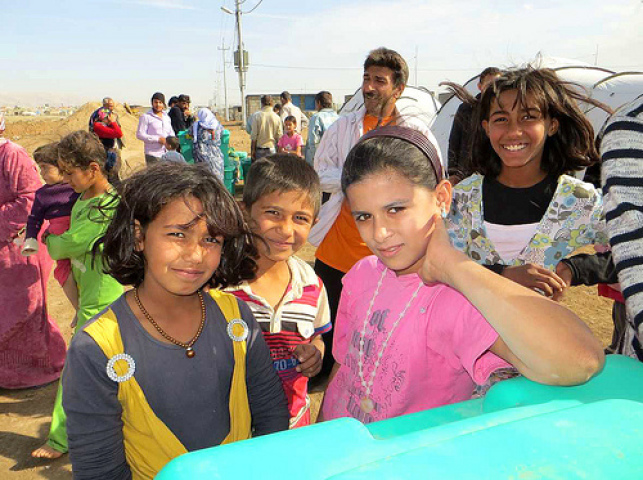
How and when was the ShelterBox idea born ?
ShelterBox was founded by Tom Henderson, OBE, a Rotarian and former Royal Navy search and rescue diver, in the Cornish town of Helston.
He saw the humanitarian response in most disasters was in the form of food and medicine. Little or no assistance was being given in terms of safe, secure shelter to help families survive the first days, weeks and months as they rebuild their lives. ShelterBox was created to fill this void.
The first consignment of 143 boxes was sent to earthquake victims of the 2001 Gujarat earthquake. ShelterBox was launched onto the global stage after the Indian Ocean earthquake and tsunami in 2004. By the end of that year nearly 2,600 boxes had been dispatched, following 16 major disasters.
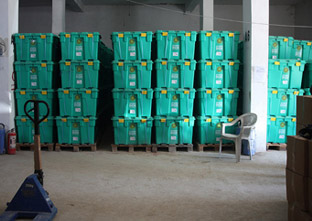
How does your organization work ?
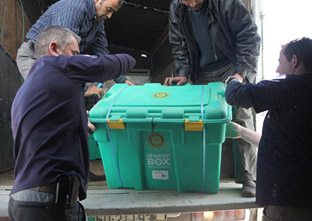 Every year hundreds and thousands of families across the world lose everything when disasters strike. Through no fault of their own and often with no warning, families lose their homes, their possessions and their livelihoods. Every day they are faced with a battle for survival and our mission is to help them. We provide emergency shelter and lifesaving supplies for families around the world who are affected by natural or man-made disasters at the time when they need it the most.
Every year hundreds and thousands of families across the world lose everything when disasters strike. Through no fault of their own and often with no warning, families lose their homes, their possessions and their livelihoods. Every day they are faced with a battle for survival and our mission is to help them. We provide emergency shelter and lifesaving supplies for families around the world who are affected by natural or man-made disasters at the time when they need it the most.
We have volunteers of all ages, experiences and nationalities. We are always looking for willing volunteers, fundraisers and potential response team members. If anyone is interested in getting involved they should visit the Be Involved section on the website at www.shelterbox.org
What can we find inside the box ? And what are your criteria for selecting a particular object ?
 The ShelterBox solution in disaster response is as simple as it is effective. We deliver the essentials a family needs to survive in the immediate aftermath of a disaster. Each large, green plastic ShelterBox is tailored to a disaster but typically contains a disaster relief tent made in breathable polyester with fire resistance, for an extended family. We believe it is the best disaster relief tent in the world. It is designed to withstand extreme temperatures, intense UV light, high winds and heavy rainfall. Our tents become more than simple shelters, they become homes. It also contains polyester blankets and insulating groundsheets, water storage and “life Straw® filtration system, cooking utensils, a stove, a basic tool kit, a children’s activity pack and other vital items. Where malaria is prevalent, 100% knitted polyester mosquito nets impregnated with insecticide are supplied.
The ShelterBox solution in disaster response is as simple as it is effective. We deliver the essentials a family needs to survive in the immediate aftermath of a disaster. Each large, green plastic ShelterBox is tailored to a disaster but typically contains a disaster relief tent made in breathable polyester with fire resistance, for an extended family. We believe it is the best disaster relief tent in the world. It is designed to withstand extreme temperatures, intense UV light, high winds and heavy rainfall. Our tents become more than simple shelters, they become homes. It also contains polyester blankets and insulating groundsheets, water storage and “life Straw® filtration system, cooking utensils, a stove, a basic tool kit, a children’s activity pack and other vital items. Where malaria is prevalent, 100% knitted polyester mosquito nets impregnated with insecticide are supplied.
Has it been the same since the beginning or has it changed ?
Every organisation develops as it grows and ShelterBox is no different. We have much more capacity to respond to more disasters than we did at the beginning. And all of the items in the box have undergone a process of evolution to make sure we are providing high quality relief aid, which is durable and easy to use. For example, language can sometimes be a barrier so having colour coordinated loops in the tent makes it easy for most people to put up the tent innards without too much verbal instruction.
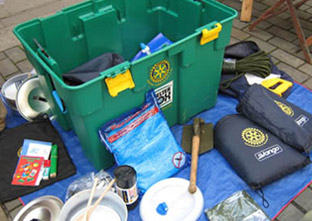
The shelterBox is in plastic – Why did you choose this material ?
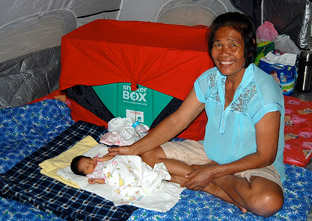 The box, the ShelterBox tent and equipment fits into, is made of green coloured Polypropylene. It is durable and waterproof, which means the equipment stays secure and intact during transit. Once the contents have been given to a family and they are inside the tent, the box is often used to store water, food items or has been used as a cot for a baby.
The box, the ShelterBox tent and equipment fits into, is made of green coloured Polypropylene. It is durable and waterproof, which means the equipment stays secure and intact during transit. Once the contents have been given to a family and they are inside the tent, the box is often used to store water, food items or has been used as a cot for a baby.
On what criteria do you decide to respond to the scene of disaster ?
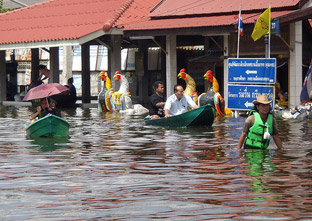 The operations teams are constantly monitoring disasters around the globe. They will consult with existing contacts and organisations on the ground before deciding whether to put a ShelterBox response team member into the country to assess the need for emergency aid relief. Once the team arrives in-country they will liaise with organisations and individuals on the ground and HQ to decide what the need is and if we can help.
The operations teams are constantly monitoring disasters around the globe. They will consult with existing contacts and organisations on the ground before deciding whether to put a ShelterBox response team member into the country to assess the need for emergency aid relief. Once the team arrives in-country they will liaise with organisations and individuals on the ground and HQ to decide what the need is and if we can help.
At how many places of disasters have you intervened since the beginning of your foundation ?
In the 11 years since ShelterBox was founded, we have responded to almost 200 natural or man-made disasters in almost 90 different countries and provided lifesaving aid for well over one million people.
What was the biggest logistical challenge you faced?
Logistical challenges vary from country to country. Sometimes it can be a real challenge to get aid to where it is needed because the disaster has all but destroyed the country's infrastructure.

At present, in how many stricken regions are you present ?
 Senegal, Niger and Nigeria (flooding) and Iraq (conflict – refugee influx from Syria): over 500,000 Syrian children are cold and homeless. ShelterBox responds to floods in Mozambique where hundred of thousands of people are displaced by widespread flooding. We help typhoon survivors in Philippines. We are also monitoring Cuba.
Senegal, Niger and Nigeria (flooding) and Iraq (conflict – refugee influx from Syria): over 500,000 Syrian children are cold and homeless. ShelterBox responds to floods in Mozambique where hundred of thousands of people are displaced by widespread flooding. We help typhoon survivors in Philippines. We are also monitoring Cuba.
Our goal is to help 50,000 families who lose everything, in a disaster, every year.
What is the Life Straw® filtration system ?
 The easy-to-use plastic design that characterizes the LifeStraw® Family simplifies on-site conversion of large quantities of dirty water into potable water in villages and by families.
The easy-to-use plastic design that characterizes the LifeStraw® Family simplifies on-site conversion of large quantities of dirty water into potable water in villages and by families.
The primary element is an approximately 30 cm long plastic housing that contains filter membranes made from Ultrason E. They provide ultrafiltration (UF membranes) and remove viruses as well as bacteria from dirty surface water that may have come from rivers, lakes, rainwater collection barrels or puddles.
The unique benefit of the high-performance resin Ultrason E in such filters is that it lends itself extremely well to production of membranes with a precisely controlled pore size and thus exactly defined filter characteristics. By using the portable purification station, the risk of contracting gastrointestinal illnesses from dirty water is reduced drastically.
Best of plastics in the ShelterBox:

Tent: Breathable Polyester with fire resistance (and polyethylene floor)
Blanket: Polyester
Fleece groundsheet with waterproof backing: brushed polyester with PVC backing
Rope: Polypropylene
Mosquito net: knitted polyester
Water filtration system: polyethersulfone (PES)
Poncho: PVC / Warm gear: Polyester
Water container: Polyethylene
...And the box: Polypropylene
MORE INFORMATION





